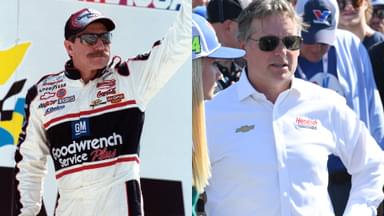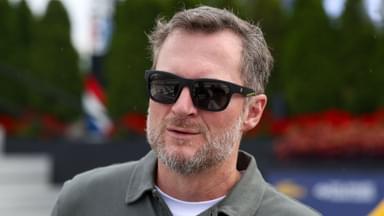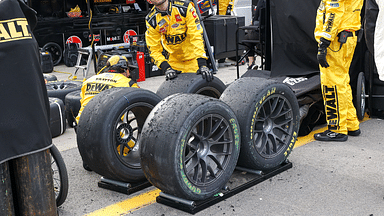The resurrection of North Carolina’s North Wilkesboro Speedway has helped bring back numerous memories of the 0.625-mile paved oval located an hour north of Charlotte. One of the biggest stories in its history took place in 1989 when Dale Earnhardt decided to outfit the Richard Childress Racing Chevrolet with new-fangled radial tires made by Goodyear.
Advertisement
Up until that point, virtually every car that ever raced in NASCAR since its first race in the late 1940s rode on bias ply tires. But Earnhardt, always a Goodyear man, decided to be the guinea pig for the company to see how its radial tires would hold up in a stock car race, particularly on a tight short track like North Wilkesboro.
It didn’t help that at the same time, Goodyear was involved in somewhat of a tire war with smaller upstart Hoosier Tires, which had sought to cut into Goodyear’s domination of NASCAR and most other forms of racing with its so-called “softer tires.”
Earnhardt felt that open-wheel cars in USAC and CART had successfully morphed to radial tires, and that more and more passenger vehicles in the U.S. were also making the shift from bias ply to radial tires. If those moves were good for them, they were good for Earnhardt.
Goodyear had hoped to introduce radial race tires at the 1989 season-opening Daytona 500, but a production issue prevented that. But finally, in time for the seventh race of the season – at North Wilkesboro – radial race tires made their long-anticipated debut.
Sure, there were risks because the science of radial tires was still evolving at the time, particularly the tire wear and drop-off of rubber, but Goodyear felt confident enough that the only way it was going to be successful was to put the tires to actual race-tested use in a points-paying Cup race.
Earnhardt was intrigued by the technology behind the innovative tire and Goodyear was equally intrigued by Earnhardt’s interest, leading to the No. 3 sporting the somewhat unusual-looking radials.
True to form, Earnhardt made the debut of radials a rousing success, as he earned the win at North Wilkesboro that day.
“We were going to introduce them at the short tracks and then slowly step into the other race tracks,” Greg Stucker, head of race tire sales for Goodyear, recalled to NASCAR.com.
Interestingly enough, while Earnhardt swore by the new Goodyear rubber, Rusty Wallace — driving for Raymond Beadle’s Blue Max team before eventually moving to Roger Penske’s fledgling NASCAR Cup operation — swore by the Hoosiers.
So in a sense, not only was it Goodyear vs. Hoosier in the race at North Wilkesboro, it was also a fight between two of the biggest names in Cup racing at the time. And as fate would have it, Goodyear quickly put down the Hoosier upstart – and the rest is NASCAR history.
“We knew the Hoosiers were quick,” Stucker said. “We also knew that the (Goodyear) radials were extremely good over the long run. We went the first 100-some odd laps under green, which you don’t do at North Wilkesboro very often. And Rusty got lapped, I think, about Lap 70.”
It is no surprise that Richard Childress still has that car. He said, “That’s one of my favorite cars I have on display (in the RCR Museum) because I didn’t redo the body on it. I made the rest of them look real nice, but that car is still beat up; it has the Dale Earnhardt look still left on it. All the fenders beat in, the sides, and a set of the very first radial tires.
“That’s why we kept that one. It was the first win anybody had on radial tires. And everybody said ‘That’s going to be the end of Dale Earnhardt; he won’t be able to run on them radial tires.’ Well, we went out there and won the first race on them.”
Little did anyone guess that Earnhardt’s win would ultimately lead to Hoosier leaving NASCAR just a few races later by mid-season of 1989. The company returned for a brief time in 1994 with its own radial, but poor sales caused Hoosier to leave NASCAR for good later that same season.
But there was still a good end for Hoosier: it eventually became ultra-successful in sprint and midget dirt track and paved racing on their rubber, which it continues to dominate the market to this day.
“It couldn’t have worked out better for us to demonstrate how strong and how consistent the radial was,” Stucker said. “The race really played into our hands pretty well. I think it was a good demonstration to everybody that this was a good package.”
“You know they say you have good days and bad days in racing? That was definitely one of the best days I’ve had at the racetrack. It was a good one,” Stucker concluded. Earnhardt’s bold call at North Wilkesboro didn’t just win a race — it changed NASCAR tire history forever.








